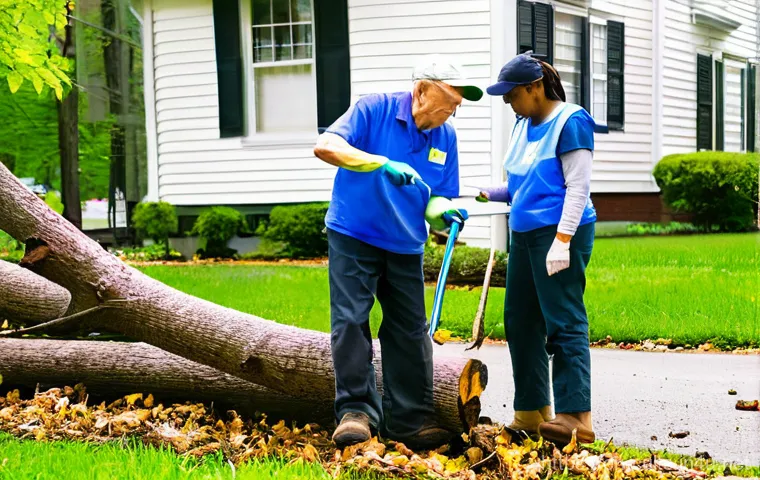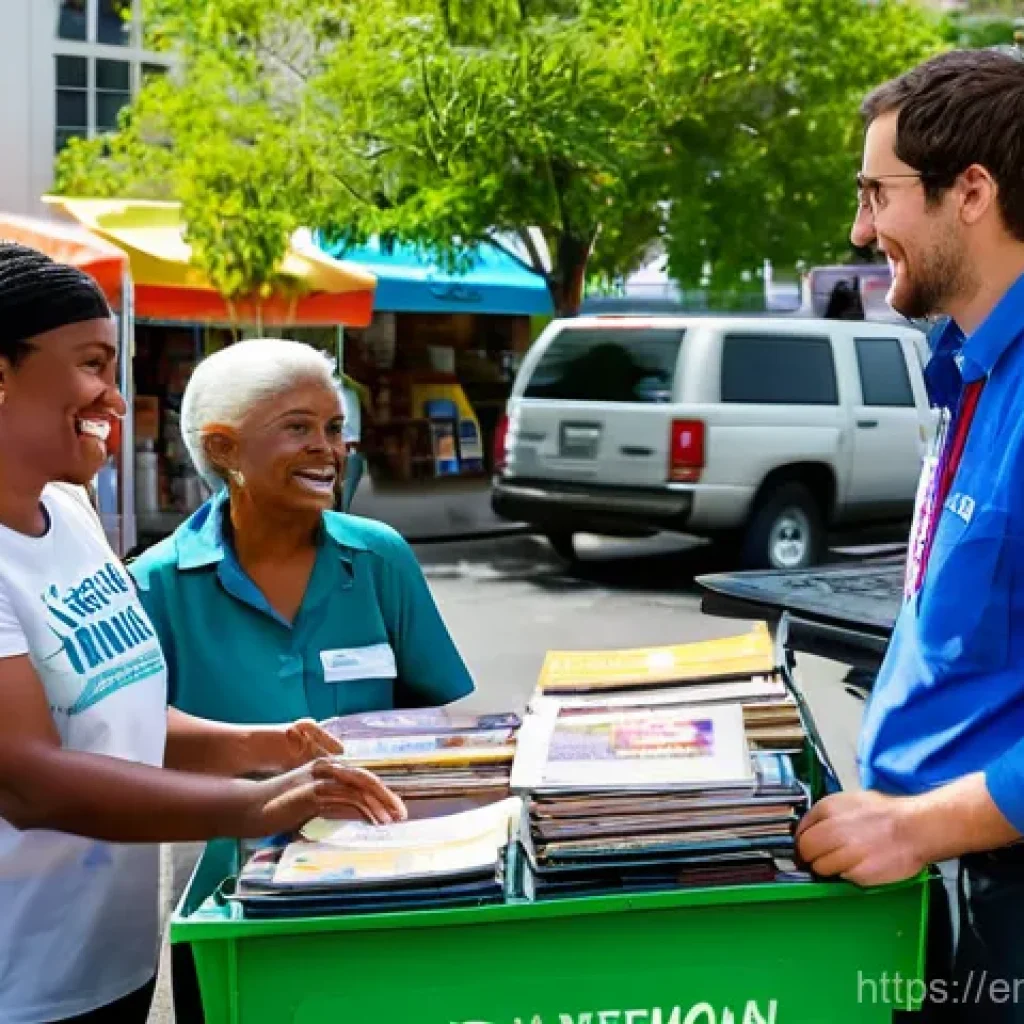Ever had a friendly, impeccably dressed duo politely offer you literature on a quiet Saturday morning? Or perhaps you’ve spotted their signature carts in bustling downtown areas, brimming with publications that spark curiosity.
For years, Jehovah’s Witnesses have been recognized globally for their distinctive and incredibly persistent evangelism. But in our rapidly evolving digital world, where every interaction seems to happen online, have their time-honored methods of sharing their faith kept pace with modern trends?
From my own experience observing various faith groups, it’s truly fascinating to see how organizations adapt, or don’t, to societal shifts. There’s a common misconception that their outreach is solely about those door-to-door visits, but I’ve noticed a significant, yet subtle, transformation in how they connect with people.
With the rise of digital ministries and personalized communication dominating today’s engagement strategies, it makes you wonder what fresh approaches they’re leveraging to reach new audiences.
Are they still relying on the tried-and-true, or have they embraced new technologies and community engagement tactics to spread their message? This isn’t just about religion; it’s a compelling case study in outreach, adaptability, and the power of consistent messaging in a noisy world.
It’s a dynamic topic, and trust me, there’s more to their strategy than meets the eye. Let’s really dig into the current landscape of Jehovah’s Witness evangelism and uncover their often-misunderstood tactics.
The Shifting Sands of Engagement: Beyond the Traditional Knock

It’s easy to picture Jehovah’s Witnesses as simply the friendly faces behind the knock on your door, a tradition that’s been etched into our collective consciousness for generations.
And believe me, that steadfast approach isn’t going anywhere anytime soon; I still see them regularly in my neighborhood, patiently making their rounds.
However, from what I’ve observed firsthand, their strategy has become far more nuanced and dynamic than just those familiar doorstep conversations. It’s like they’ve realized that while the old ways are gold, the modern world demands a broader toolkit.
They’ve been quietly, yet effectively, diversifying their engagement, reaching out in ways that often fly under the radar. What I find particularly fascinating is how they’ve managed to maintain their core message and identity while experimenting with new avenues.
It’s a testament to their organizational adaptability, something many traditional groups struggle with. You might not immediately recognize their new methods because they’re designed to integrate seamlessly into everyday life, rather than stand out as an overt religious recruitment drive.
This isn’t just a minor tweak; it’s a fundamental recalibration of how they interact with potential new members and the general public. They’re trying to meet people where they are, which, in 2025, means a lot of different places.
Reimagining Public Witnessing: Carts and Kiosks
Gone are the days when public witnessing was solely about standing on a street corner with a stack of magazines. Today, you’re far more likely to encounter their distinctive literature carts strategically placed in high-traffic areas – think bustling farmers’ markets, busy college campuses, or even outside local libraries.
I’ve personally stopped at a few of these, initially out of sheer curiosity, and found the volunteers to be incredibly polite and approachable, never pushy.
They’re often smiling, ready for a chat if you initiate one, but equally content to let you browse their publications unhindered. This low-pressure environment is a game-changer.
It removes the perceived barrier of an unsolicited knock and invites interaction on the public’s terms. It’s a brilliant move, really, allowing people to approach them when they feel comfortable and open to a conversation, rather than feeling caught off guard.
I’ve noticed a significant increase in these setups over the past few years, especially in urban areas, and it feels much more organic than previous approaches.
Community Integration and Disaster Relief Efforts
Beyond the direct evangelism, I’ve also seen a growing emphasis on community involvement, albeit often behind the scenes. While not overtly religious outreach, their disaster relief efforts are a powerful, if subtle, form of witnessing.
When a hurricane ripped through a neighboring state a couple of years ago, I was genuinely impressed by the organized response from local Jehovah’s Witness congregations, mobilizing volunteers and resources for cleanup and support.
This kind of practical, compassionate action speaks volumes, building goodwill and demonstrating their values in a tangible way. It shows they’re not just about doctrine; they’re about helping people in real, immediate situations.
From my perspective, this proactive community engagement fosters a deeper level of trust and respect, paving the way for spiritual conversations later on, should people choose to engage.
It’s a holistic approach that many other organizations could learn from.
Navigating the Digital Landscape: Their Online Presence
It would be naive to think that an organization so focused on communication would ignore the vast expanse of the internet. And they haven’t. While they might not be chasing viral TikTok trends, their online strategy is remarkably sophisticated and clearly aimed at a global audience.
Their official website, jw.org, is a powerhouse of information, meticulously organized and translated into an astonishing number of languages – far more than I’ve seen from most international organizations.
It’s not just static text either; there are videos, audio dramas, publications, and even a robust Bible study program available for free. I’ve spent some time exploring it myself, and the sheer volume and accessibility of their content are truly impressive.
It’s designed to be a one-stop shop for anyone curious about their beliefs, offering answers to frequently asked questions and providing a comprehensive library of their materials without any paywalls or registration requirements.
Jw.org: A Digital Hub for Global Outreach
When I first stumbled upon jw.org years ago, I was struck by its professional polish and the sheer depth of information available. It’s clear they’ve invested heavily in making it a primary touchpoint for their global evangelism.
Think about it: someone who might never open their door to a visitor can easily and anonymously explore their beliefs from the comfort of their own home, any time of day.
This platform democratizes access to their teachings in a way that traditional methods simply can’t. They offer online Bible study requests, allowing individuals to connect with a local Witness for personalized guidance, bridging the gap between their digital presence and real-world interaction.
I’ve noticed how consistently they direct people to the website during public witnessing, turning a brief encounter into a potential long-term digital engagement.
It really shows how they understand the evolving user journey.
Leveraging Social Media Responsibly (and Discreetly)
While you won’t find official Jehovah’s Witness accounts actively posting daily on Instagram or X in the same way a commercial brand might, their individual members are definitely present.
What I’ve observed is a more organic, person-to-person approach on social media. Many Witnesses share links to jw.org articles, videos, or announcements from their personal profiles, effectively acting as decentralized content distributors.
It’s a grassroots digital evangelism that, while less centralized, is incredibly potent because it leverages personal networks and trust. This indirect approach also helps them maintain a certain level of control over their official messaging while still participating in the digital conversation.
They seem to understand that authenticity resonates more online, and having individual members share content rather than a monolithic institutional account can often be more impactful in building connections.
Cultivating Personal Connections in a Hyper-Connected World
Even with all the digital advancements and strategic public placements, the core of Jehovah’s Witness evangelism remains deeply rooted in personal interaction.
From my perspective, this is where their real strength lies. While technology can open doors, it’s the genuine, often one-on-one, conversations that truly resonate with people.
They understand that faith is a profoundly personal journey, and a website, no matter how comprehensive, can’t fully replace the human element of empathy, understanding, and shared experience.
I’ve spoken to a few people who were initially introduced to the faith online or through a cart but ultimately decided to pursue it further because of the warm, consistent support they received from an individual Witness.
It’s that consistent follow-up, the willingness to answer questions patiently, and the genuine interest in another person’s well-being that truly sets their approach apart.
They’re not just disseminating information; they’re building relationships.
The Enduring Power of One-on-One Bible Studies
The cornerstone of their growth has always been, and continues to be, the personalized Bible study program. This isn’t a classroom lecture; it’s typically a one-on-one or small-group discussion in a comfortable setting, often the student’s home or a public place.
I’ve always been struck by how tailored these studies are, allowing individuals to progress at their own pace and ask any questions they might have without feeling judged.
It’s an incredibly effective way to delve into their doctrines, and it fosters a deep personal connection between the student and the teacher. This long-term engagement strategy builds trust and provides ample opportunity for spiritual growth, which is something you just can’t replicate with a quick online video or an anonymous article.
It’s a testament to their belief in sustained, personal mentorship.
The Role of Kindness and Persistence in Outreach
One thing I consistently notice is the unwavering kindness and persistence of Jehovah’s Witnesses. Whether it’s a brief interaction at a literature cart or a more extended conversation, they almost invariably exude a gentle demeanor.
This isn’t just a superficial pleasantry; it’s a foundational aspect of their outreach. They genuinely believe they’re offering something valuable, and that conviction fuels their persistence without it tipping into aggression.
I’ve observed situations where people have been quite dismissive, and yet the Witness maintained their composure and offered a polite farewell. This consistent display of patience and respect, even in the face of rejection, is a powerful silent witness in itself.
It’s a long game for them, focusing on sowing seeds rather than demanding immediate results, and that takes a tremendous amount of sustained personal effort.
Leveraging Technology for Internal Coordination and Support

It’s not just about how they reach the public; it’s also about how they support their own members and coordinate their vast global efforts. From my vantage point, it’s clear they utilize modern technology extensively behind the scenes to streamline their operations, from managing literature supplies to organizing conventions and providing educational resources to their congregations worldwide.
This internal efficiency allows them to maximize their outreach efforts. They aren’t just sending people out with Bibles; they’re equipping them with digital tools, training, and logistical support that would impress any corporate operations manager.
This infrastructure is often overlooked, but it’s absolutely crucial to understanding their overall effectiveness and how they manage to coordinate millions of volunteers globally.
It’s a blend of old-school dedication with new-school operational excellence.
Digital Tools for Congregation Management
I’ve learned that individual congregations rely on a suite of digital tools for everything from scheduling their weekly meetings and assigning talks to keeping track of their literature inventory.
These aren’t necessarily public-facing apps, but internal systems that ensure smooth operations. For example, they likely use digital platforms for volunteers to sign up for various duties, coordinate their public witnessing schedules, and access training materials.
This level of digital organization means less administrative burden for elders and more time for actual ministry. It’s this quiet efficiency that allows them to scale their operations so effectively across different languages and cultures without getting bogged down in red tape.
It’s a smart application of technology to support their core mission.
Global Communication and Educational Resources
One of the most impressive aspects of their internal structure is their ability to disseminate information and educational content globally with incredible speed and consistency.
Think about it: an update or new publication released by their governing body in the United States can be translated and made available to millions of members across hundreds of languages almost simultaneously.
This requires a robust digital infrastructure for translation teams, content distribution, and secure communication channels. This ensures that all members, regardless of their location, receive the same spiritual instruction and guidance, fostering a strong sense of unity and common purpose.
From my observations, this consistent global messaging is a key factor in their cohesiveness as a worldwide organization.
| Evangelism Strategy | Key Characteristics | Impact on Engagement |
|---|---|---|
| Door-to-Door Ministry | Traditional, persistent, direct personal contact, personalized message delivery. | Maintains core identity, reaches individuals in their homes, allows for deep conversations. |
| Public Witnessing (Carts/Kiosks) | Low-pressure, visible presence, self-selection by public, offers literature access. | Increases exposure in high-traffic areas, removes initial barrier, invites voluntary interaction. |
| Digital Outreach (jw.org) | Global reach, comprehensive resources, multi-language support, anonymous exploration. | Attracts curious individuals online, provides in-depth learning, bridges to personal contact. |
| Personalized Bible Studies | One-on-one, tailored content, long-term mentorship, trust-building. | Fosters deep understanding, encourages spiritual growth, creates lasting connections. |
Adaptability and Resilience: A Lesson in Consistent Messaging
What truly stands out about Jehovah’s Witness evangelism is not just their willingness to adapt, but their remarkable resilience in maintaining a consistent message amidst all these changes.
They’ve managed to integrate modern methods without compromising their fundamental beliefs or their distinctive approach. This balance between innovation and tradition is a delicate act, and it’s something I admire from an organizational standpoint.
Many groups struggle to stay relevant while holding onto their core values, but they seem to have found a way to do both effectively. It’s a powerful testament to their commitment and their strategic thinking, proving that even deeply traditional organizations can evolve with the times if they’re purposeful about it.
Their ability to remain steadfast in their mission, even as the world around them shifts dramatically, offers a compelling case study in brand consistency and long-term vision.
It’s not about being trendy for the sake of it, but about finding the most effective ways to communicate an unchanging message.
Strategic Integration of Old and New Methods
From my observations, their strength lies in not abandoning the “old” for the “new,” but rather in strategically integrating them. The door-to-door work, the public carts, and the digital presence aren’t mutually exclusive; they’re interconnected parts of a larger strategy.
A person might first encounter them through jw.org, then see a cart in person, and eventually engage in a door-to-door conversation or a Bible study. Each method serves a specific purpose in the funnel of engagement, acting as different entry points and reinforcing touchpoints.
This multi-channel approach maximizes their chances of connecting with people who have diverse preferences and comfort levels. It’s a very smart way to ensure that no stone is left unturned in their outreach efforts, covering a wide demographic and varied interaction styles.
The Underlying Drive: Conviction and Purpose
Ultimately, I believe the success of their evangelism, in all its forms, boils down to the deep conviction and sense of purpose that permeates their community.
It’s not just a hobby or a casual interest for them; it’s a way of life, driven by a profound belief in the urgency and importance of their message. This internal motivation translates into an external consistency and dedication that is hard to match.
When you interact with them, whether in person or online, that underlying conviction is palpable. It’s what fuels their persistence, their kindness, and their willingness to adapt.
From what I’ve seen, this unwavering commitment is the true secret sauce, enabling them to navigate the complexities of modern outreach while staying true to their foundational mission.
It’s a genuine passion that resonates and compels action, both for the Witnesses themselves and for those they reach out to.
Reflecting on the Journey
Well, folks, diving into the world of Jehovah’s Witness evangelism has been quite an eye-opener, hasn’t it? It’s a fascinating case study in how a deeply traditional organization can gracefully pivot, blending age-old methods with savvy modern approaches. What truly sticks with me is their unwavering commitment and the sheer resilience they demonstrate in delivering their message, adapting to our fast-paced world without losing an ounce of their core identity. It makes you think about how we all navigate change while holding onto what truly matters.
Useful Information
1. Don’t put all your eggs in one basket! Whether you’re sharing a message or growing a business, embracing multi-channel strategies – online, in public spaces, and through direct interaction – vastly increases your chances of connection. It’s about diversifying your touchpoints and understanding that different people respond to different approaches.
2. Even in our hyper-digital age, nothing truly replaces genuine human connection. Technology can introduce, but personal interaction, empathy, and tailored conversations are often what solidify relationships and lead to deeper engagement. Always remember the power of a real, heartfelt chat.
3. As we’ve seen, a consistent message, delivered with kindness and persistence over time, builds incredible trust and recognition. People might not agree with everything, but they’ll respect a clear, unwavering purpose. This consistency is key for any brand or personal endeavor.
4. True adaptability means finding innovative ways to integrate new tools and platforms *with* your proven methods, not ditching your roots for the latest trend. It’s about enhancing, not replacing, what has always worked for you, ensuring your core values remain intact.
5. Sometimes, the most effective strategies are the ones happening quietly behind the scenes. From robust digital infrastructure to meticulous internal coordination, understanding the ‘engine room’ of any successful effort reveals why they can maintain such a widespread and organized presence, allowing for maximal external impact.
Key Takeaways
To sum it all up, the Jehovah’s Witnesses offer a compelling blueprint for strategic outreach in the 21st century. Their approach is a masterful blend of traditional, personal evangelism, visible public witnessing through carts and kiosks, and a remarkably sophisticated digital presence via jw.org. They prioritize personal connections through one-on-one Bible studies, all while leveraging robust internal technological support to coordinate their global efforts. This adaptability, coupled with an unshakeable core message and profound conviction, truly underpins their resilience and effectiveness in a constantly evolving world.
Frequently Asked Questions (FAQ) 📖
Q: Are Jehovah’s Witnesses still primarily focused on door-to-door ministry, or have their outreach methods truly shifted with the digital age?
A: Oh, that’s such a common and perfectly natural question! When most people picture Jehovah’s Witnesses, that classic image of a friendly knock on the door immediately springs to mind, right?
And honestly, it’s still very much a part of their core identity and a significant aspect of their ministry. From what I’ve observed, the traditional door-to-door work, where they visit homes to share their message, remains incredibly important to them.
It’s a foundational practice, deeply rooted in their beliefs, and I don’t see that disappearing anytime soon. However, to say they haven’t adapted would be completely missing the bigger picture!
What I’ve found truly fascinating is how seamlessly they’ve integrated new approaches alongside their time-honored methods. Think of it like a beautiful blend – they haven’t abandoned the old, but they’ve certainly embraced the new.
It’s not a complete pivot, but rather a strategic expansion into areas where people are now spending most of their time. They’re definitely not stuck in the past; they’re navigating the present with a very clear purpose, combining what works best from both worlds.
It truly hits home when you realize that even in a digital era, personal, face-to-face conversations still hold immense power for them.
Q: What specific digital strategies or “new technologies” are Jehovah’s Witnesses leveraging to connect with people today?
A: This is where it gets really interesting, and honestly, quite strategic! While you might not see them running splashy social media campaigns in the typical influencer style, their digital footprint is far more substantial than many realize.
I’ve personally noticed a massive push towards their official website, jw.org. It’s an absolute treasure trove of information – articles, videos, publications, and even Bible study tools, all available in hundreds of languages.
They’ve poured an incredible amount of effort into making this a user-friendly, accessible hub for anyone curious about their faith. Think of it as their primary digital storefront, meticulously designed to answer questions and provide resources on demand.
Beyond that, I’ve seen a noticeable increase in personalized digital outreach. While they might not be direct messaging strangers on Instagram, they are absolutely utilizing email and even text messages for follow-up conversations with people who have expressed interest.
During the height of the pandemic, they ramped up letter writing and phone calls significantly, which, while not “new technology,” certainly leverages modern communication platforms to replicate that personal touch.
It’s a very deliberate and focused approach, not about going viral, but about providing quality content and personalized connection through digital means, ensuring that if someone searches for answers, they’ll find their resources readily available and thoughtfully presented.
Q: Beyond door-to-door and their digital presence, what other subtle yet effective community engagement tactics have you observed Jehovah’s Witnesses using to spread their message?
A: Ah, this is where their adaptability really shines, and it’s often the most overlooked aspect of their strategy! While door-to-door and digital are prominent, I’ve found their “public witnessing” to be incredibly impactful.
You know those literature carts you often see in bustling downtown areas, at transit hubs, or even outside local markets? That’s a brilliant example. It’s a passive yet inviting form of outreach.
People can approach them at their own pace, browse literature, or simply ask a question without feeling any pressure. From my own observations, this tactic taps into a completely different demographic – people who are on the go, perhaps a bit curious, but wouldn’t necessarily answer a knock at their door.
It shows an astute understanding of public spaces and human psychology. Moreover, they often participate in community events or set up information booths where permitted, subtly integrating into the fabric of local life.
What really stands out to me is the consistency of these efforts. Whether it’s a friendly face by a literature cart or a well-placed article online, their message is always consistent, clear, and readily available.
It’s a testament to their dedication to reaching everyone, everywhere, using a multi-faceted approach that meets people exactly where they are.






